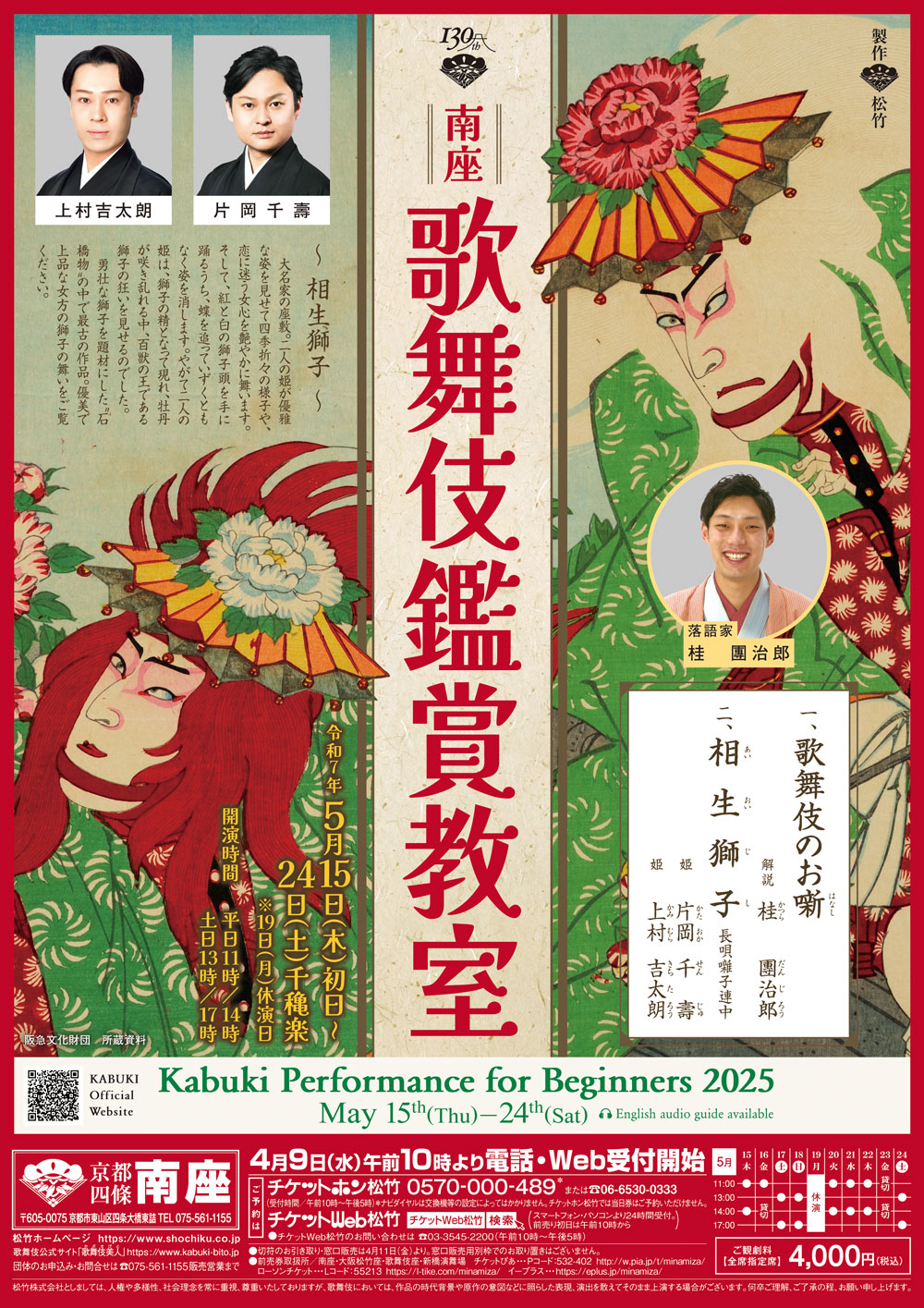Minamiza Theatre
Kabuki Performance for Beginners 2025 at the Minamiza Theatre
Daily: May 15 (Thu) - May 24 (Sat), 2025
Weekdays 11:00 AM~ / 2:00 PM~
Weekends 1:00 PM~ / 5:00 PM~
*No performances on the 19th (Mon).
*Reserved seats for 16th (Fri) 2:00 PM and for 23rd (Fri) 11:00 AM/ 2:00 PM performances are sold out.
◇
Schedule
Support: Agency for Cultural Affairs, Government of Japan / Japan Arts Council
Agency for Cultural Affairs, Government of Japan / Japan Arts Council
On sale: from Apr 09 (Wed), 2025 10:00 AM(JST)
All seats:4,000
Unit: Japanese Yen (tax included)
Minamiza Theatre (at KYOTO) Theatre Information
- *No English supporting guide available.
- *Simplified English Audio Guide available (1,000 yen, cash only; brief description and synopsis only).
What is Kabuki ?
Kabuki is one of Japan's traditional performing arts, widely appreciated by theatre lovers around the world. This is a wonderful opportunity to experience Kabuki for the first time and gain a deeper understanding of Japan's rich cultural heritage. The program is designed for everyone—whether you're an expert or a newcomer, young or old, Japanese or international visitors. Kabuki features a variety of plays, and this program will introduce you to a captivating Kabuki dance drama. Sit back, relax, and enjoy the performance on stage, accompanied by beautiful live music, all within the historic setting of this iconic theatre.
 Minamiza Theatre Stage Photo
Minamiza Theatre Stage Photo
Introduction to KABUKI
CAST :
- Explained by
- Katsura Danjirō
STORY :
This will feature rakugo performer Katsura Danjirō, offering a humorous yet insightful introduction to Kabuki. Through his engaging storytelling, he will compare rakugo and Kabuki, highlighting their unique styles and shared traditions. You'll gain essential knowledge about Kabuki’s key aspects, ensuring a deeper appreciation of this traditional art form. Additionally, he will introduce the storyline of the featured dance, 'Aioi Jishi,' providing a clear understanding of the plot and characters before the performance
Intermission: 20 minutes
AIOI JISHI
['The Twin Lions']
CAST :
- Princess
- Kataoka Senju
- Princess
- Kamimura Kichitarō
STORY :
In the grand hall of a noble household, two graceful princesses dance elegantly, embodying the beauty of the changing seasons and the fleeting emotions of a woman lost in love. As they move, holding red and white lion masks, they chase after butterflies and suddenly vanish without a trace. Before long, the two princesses reappear, now transformed into the spirits of lions. Amidst a sea of blooming peonies, they unleash the fierce and majestic movements of the lion, the king of beasts.
This is the oldest work among the Shakkyōmono (Lion Dance) pieces, showcasing a refined and elegant interpretation of the lion dance—a performance brimming with grace and dignity.


